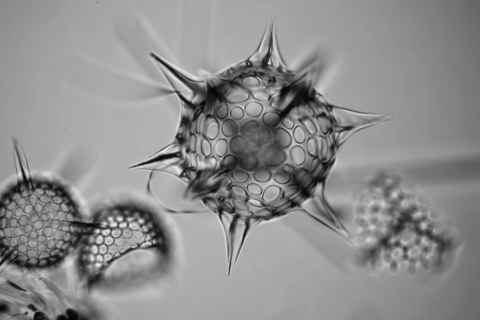New method for detecting changes in ecosystems
Radical changes in ecosystems
Earth and all the living organisms on it are constantly changing. But is there any way we can detect if these changes are occurring at an abnormal rate? What are the consequences of these changes for the organisms affected? An international team of researchers including scientists from FAU have developed a method of detecting such developments and tracking how new ecosystems are formed. They have published their findings in the specialist journal Science.
Changes in the environment are becoming increasingly apparent due to climate change. Temperatures are rising, there is either no rain at all or it falls in severe storms. These changes have an effect on ecosystems and the living conditions of the organisms within them. If the conditions within these ecosystems become too unfavourable for individual organisms, they either migrate or even become extinct. At the same time, new ecological niches arise that other species can populate or new species are created. ‘The problem is knowing at which point we can say it’s a new ecosystem,’ explains Prof. Wolfgang Kießling from the Chair of Palaeoenvironmental Research at FAU. ‘We have now developed a method that allows us to distinguish such events from normal background noise.’
When is it a new ecosystem?
An ecosystem is considered new by scientists if extremely rapid changes in the range of organisms within it lead to a state that previously did not exist. The speed at which the changes occur is extremely important. Ecosystems are always changing to a certain extent. Significant shifts only occur above a certain limit, for example as caused by man-made climate change. Scientists are now able to precisely determine this limit using statistics.
Creation of new ecosystems is risky for the species involved
Times of increased change are extremely dynamic and pose special challenges for the species involved. Wolfgang Kießling and his colleagues successfully tested their method on fossil ecosystems from a period ranging over 66 million years and their results are alarming. The risk of extinction during such dynamic periods of change is twice to four times higher than under normal conditions. At the same time, however, there is a greater chance that new species migrate or are created. ‘Changes have always occurred in ecosystems and they will continue to do so,’ Kießling continues. ‘In terms of protecting the environment, it’s therefore important not to prevent changes in general, but to try and steer them in a direction that does not have an increased risk of extinction.’
Further information
DOI: 10.1126/science.abb3996
https://science.sciencemag.org/content/370/6513/220
Prof. Dr. Wolfgang Kießling
Phone: +49 9131 85 26957
wolfgang.kiessling@fau.de
